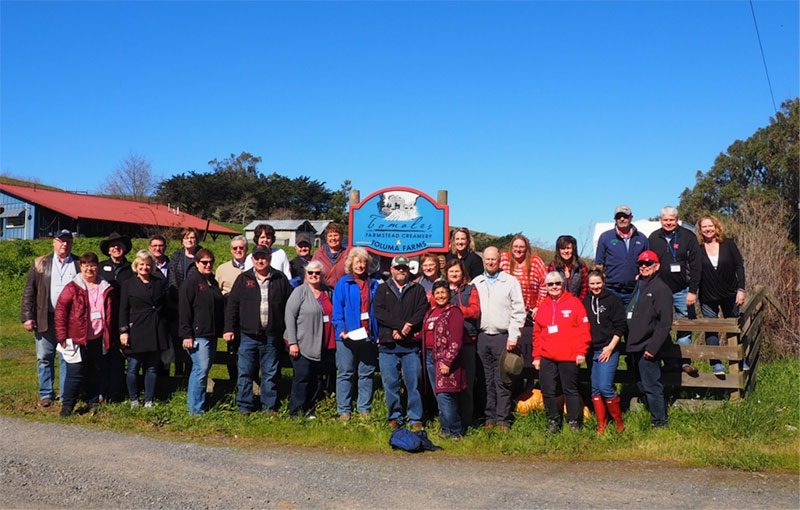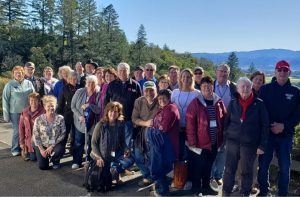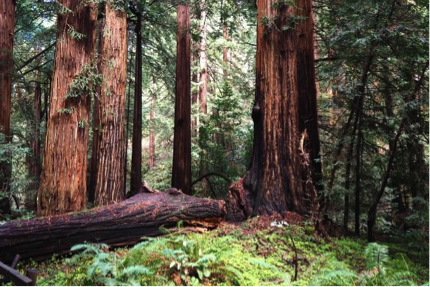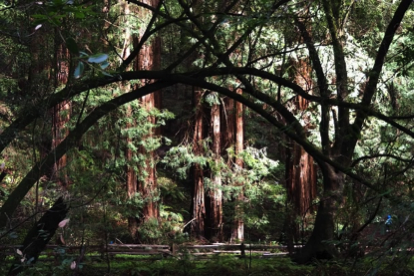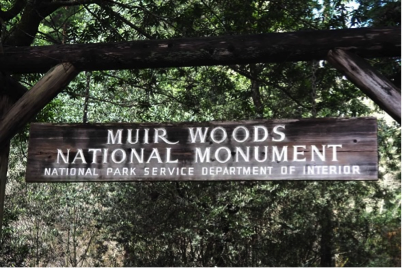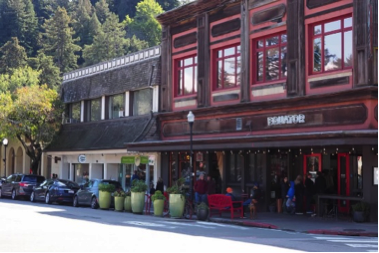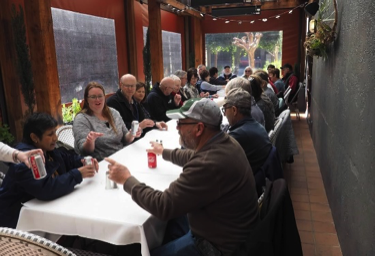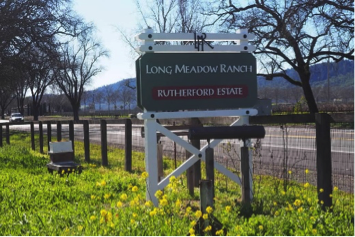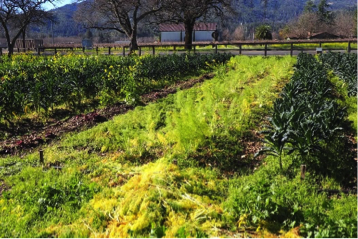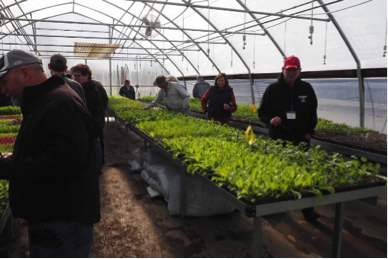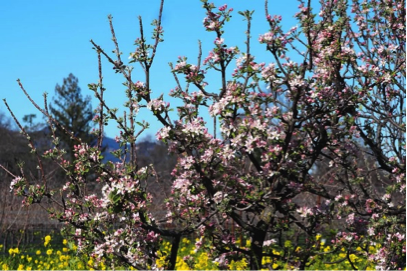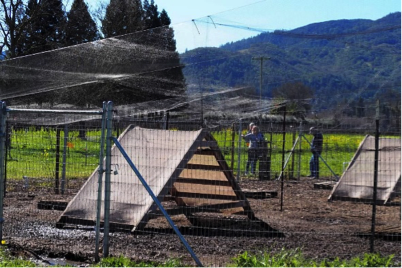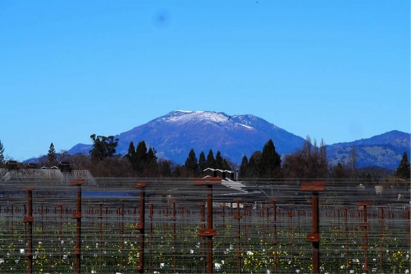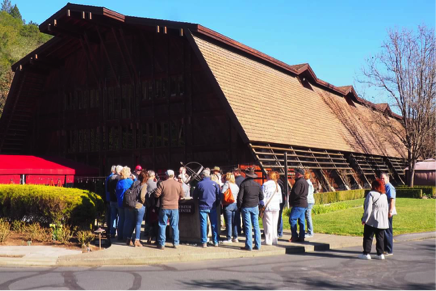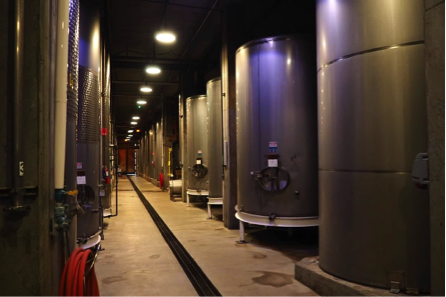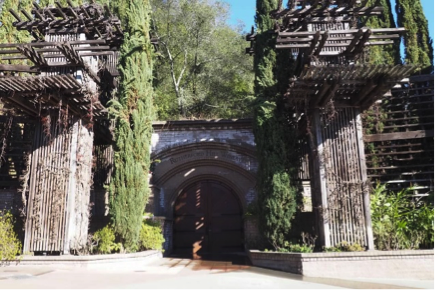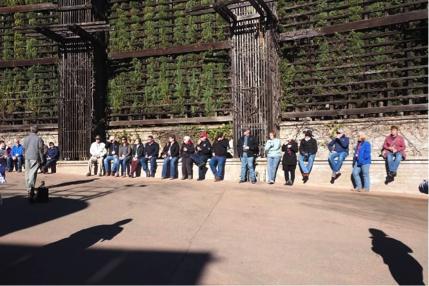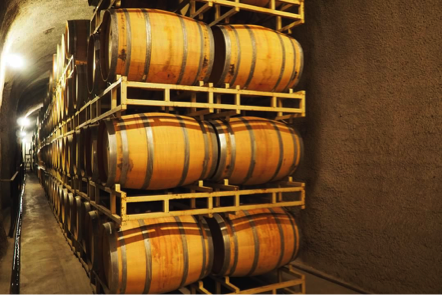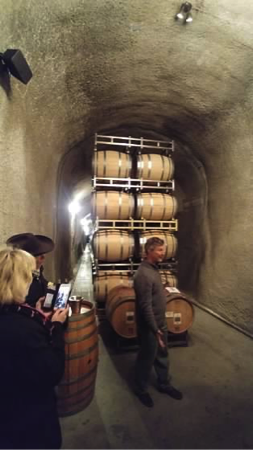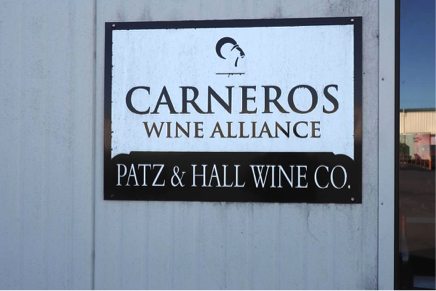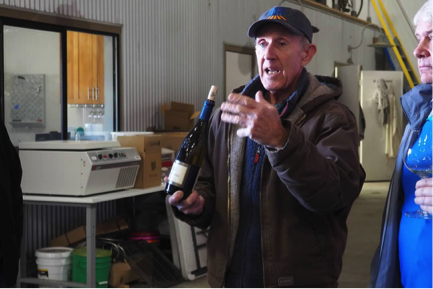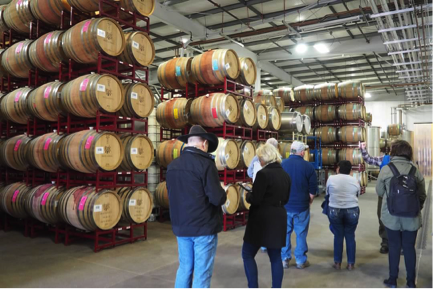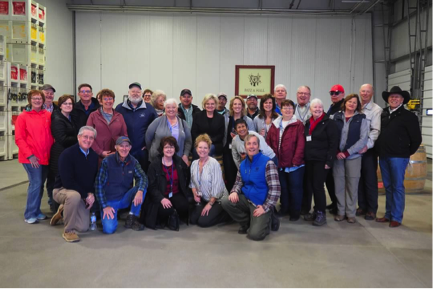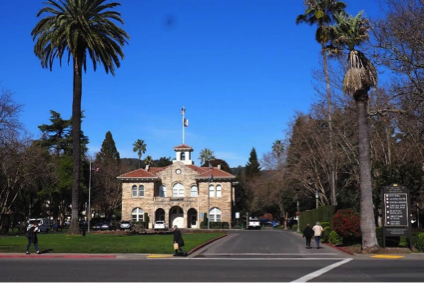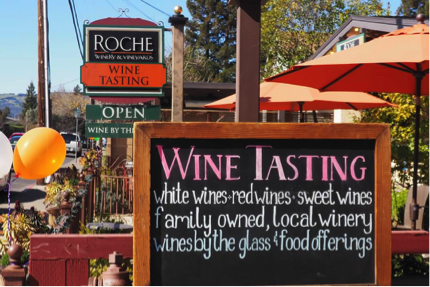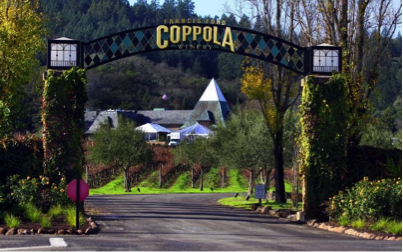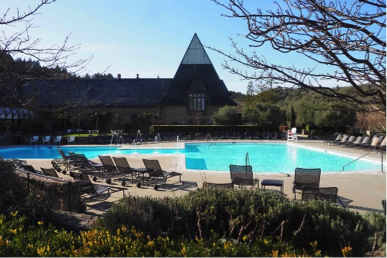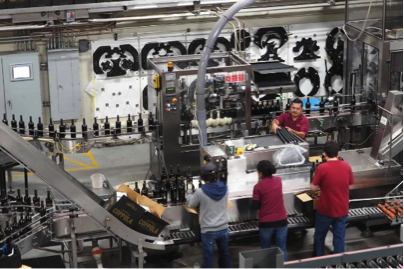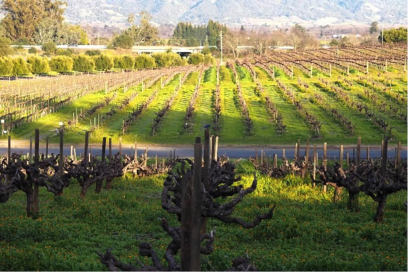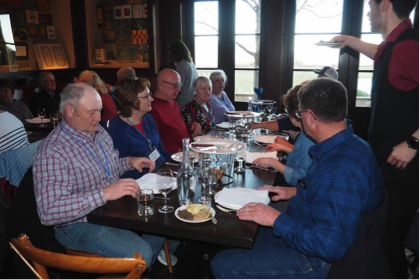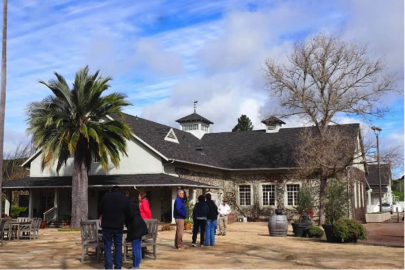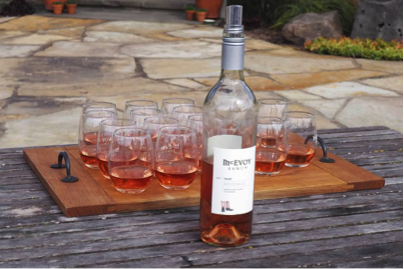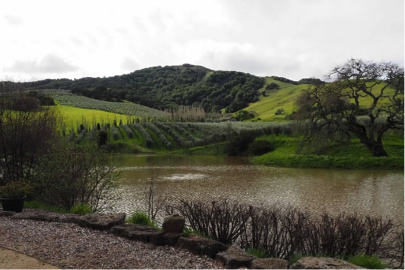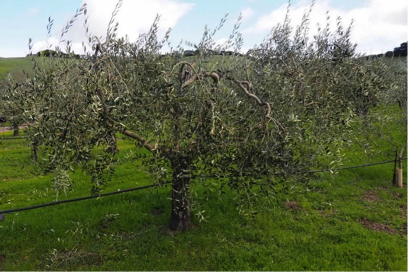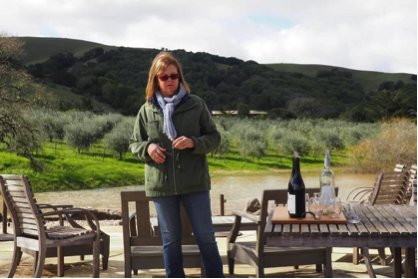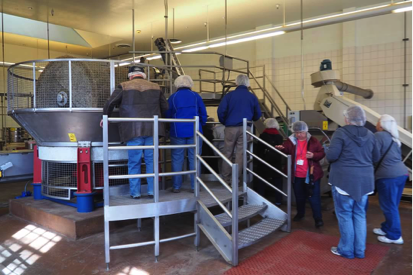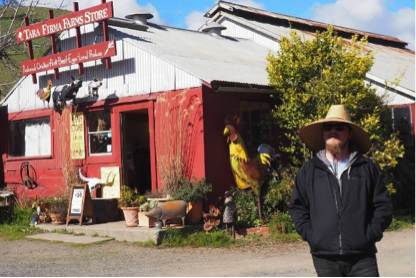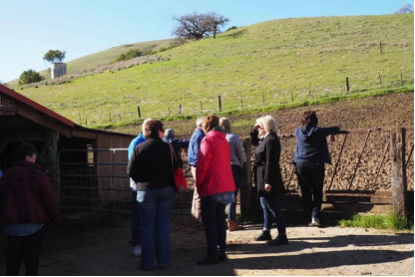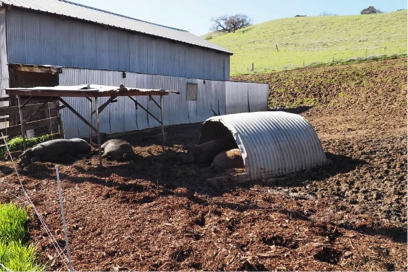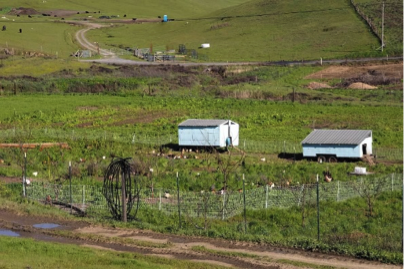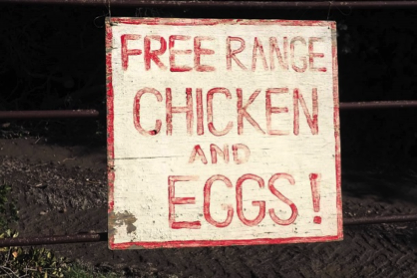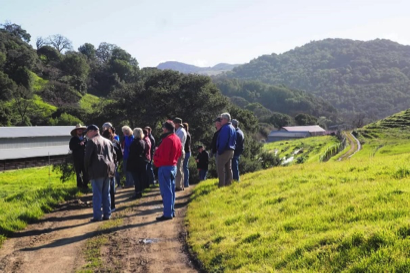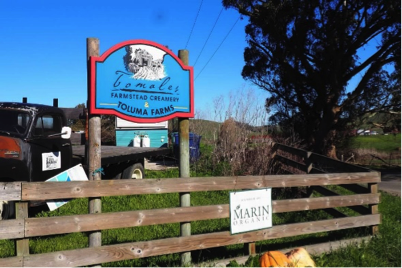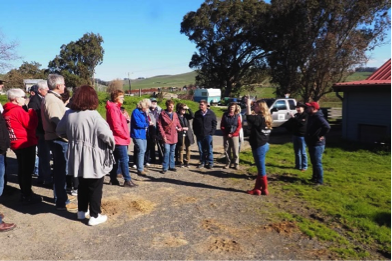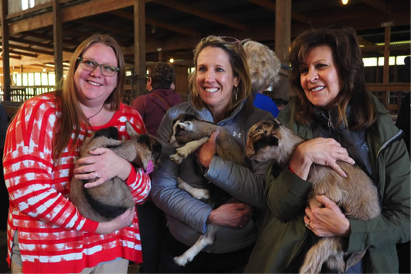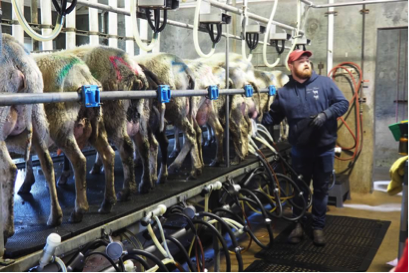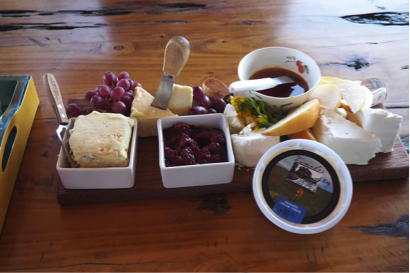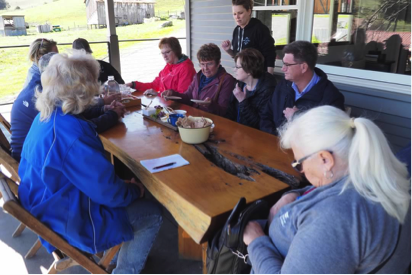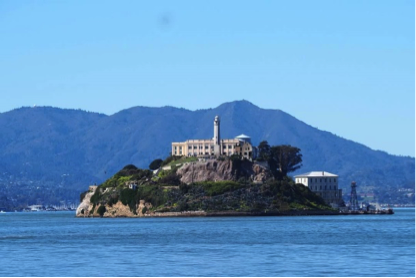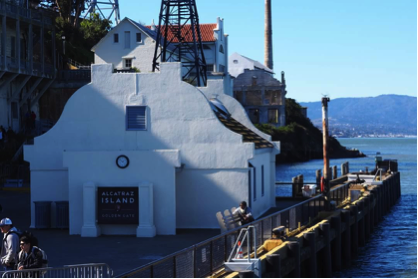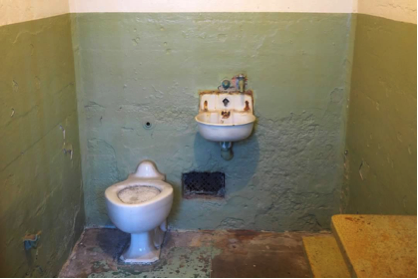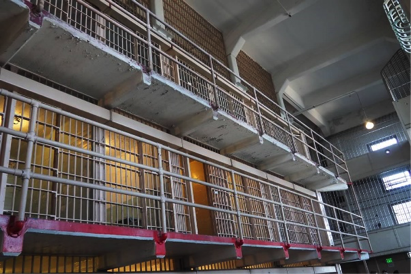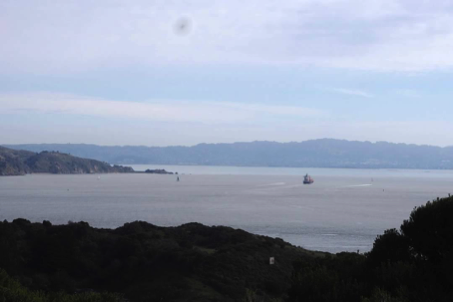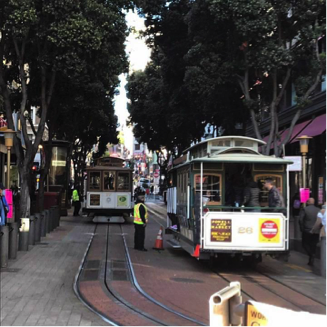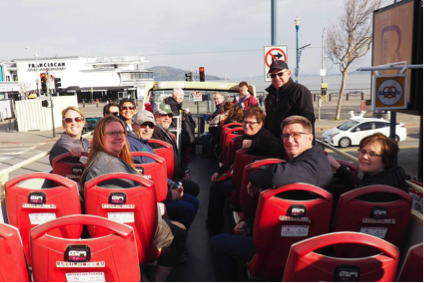February 17-24, 2019
Hello Alumni, I hope you enjoy reading about our California Seminar. It was a great seminar with very memorable visits through out!
Day 1 – Sunday, 02-17-19:
Thoughts and notes by Natalie Echtenkamp: After arriving in San Francisco, we loaded into the bus and proceeded to Mill Valley for lunch. Mill Valley is the most expensive place to live north of San Francisco. Home prices start at well over a million dollars.
Mill Valley is located in beautiful Marin County. We had a wonderful lunch at Piazza D’Angelo.
After lunch we traveled to Muir Woods. In 1905 William and Elizabeth Kent purchased 611 acres of land around Redwood Creek and the bay area for $45,000. Kent donated 295 acres of this land to the federal government, at which point was declared a national monument by President Theodore Roosevelt. In 1908, Muir Woods National Park was established in the name of wilderness advocacy trailblazer, John Muir.
Muir Woods is the oldest Coastal Redwood Forest, and coastal redwoods are the tallest living things on Earth. The tallest reaching 379’ above the forest floor. The woods are a magnificent hiking area.
Day 2 – Monday 02-18-19: There are 3 separate valleys in California’s Wine Country. Each is separated by mountains and hills. The Russian River Valley, Sonoma Valley and Napa Valley.
Today we visited Napa Valley, starting with a guided tour of the Long Meadow Ranch Rutherford Estate. Long Meadow Ranch farms in 3 counties, over 2,000 acres of grapes, olives, fruits, vegetables and pasture. Full circle farming – An organic, sustainable, integrated farming system that relies on each part of the ranch to contribute to the health of the whole. The Rutherford Estate sits on a mineral-rich bench land that was once a riverbed on the floor of the Napa Valley. With over 500 varietals of organic heirloom fruits and vegetables, the diverse ranch defies the monoculture that reigns supreme in Napa Valley. Long Meadow’s chefs collaborate with their agriculture team to carefully select varietals that will thrive and provide the finest produce for the restaurant and farmer’s market throughout the year.
The growing flock of chickens roost in a state-of-the-art coop. The chickens feed on organic fruits and vegetables that cannot be used in the restaurant or sold in the farmer’s market. In turn, their manure is a vital part of the ranch’s compost, adding much needed nitrogen to the fertilizer.
Thoughts and notes by Esther & Ron Rickert – The ride through Napa Valley was beautiful. We saw cattle, sheep, pasture and plenty of grape vines. We visited the town of Yountville for lunch. It is a very nice little town with lots of little shops and wine stores. You could find almost any kind of food you wanted. Now on to Rutherford Hills Winery, to have flights of wine with our wine tour.
Rutherford Hills Winery, with the largest wine cave in the Napa Valley. Nestled high on a hill, the winery commands a spectacular view overlooking the Rutherford bench of Napa Valley. It is from a handful of the most select Napa vineyards that Rutherford Hill continues its tradition of crafting legendary wines.
Thoughts and notes by Jon & Marcia Montgomery – Rutherford Hills Winery is a rather big operation with a large building built from repurposed railroad ties and timbers. Rutherford Hills has an impressive setup of stainless steel tanks and processing equipment used for their grape harvest and wine production. They produce chardonnay and pinot noir along with merlot. The winery has built a mile-long tunnel into the hillside. This area is used for storing and aging the wines. With the tunnel, temperatures and humidity levels are naturally regulated for consistency which is an asset in aging the wines. There were countless oak barrels in the tunnel, holding various types and vintages waiting to be bottled. Our guide, Joseph, endeavored to teach us some of the techniques used by sommeliers when tasting and evaluating wines. Needless to say, there is much to know beginning with glassware, tasting and mouthfeel, along with inhaling and trying to ascertain the various subtle flavors and scents of the wines. We also learned more about the microclimates of the region explaining why certain grapes are grown more successfully in specific locations. Rutherford Hills boasts that they recycle 100% of their waste. The winery is also 100% solar power. I think we all appreciated the time spent at Rutherford Hills. It was a beautiful afternoon and the views of the valley were fantastic. All too soon it was time to move on to our next appointment. I’m sure we will look for Rutherford Hills wines in our local stores. They make some great ones….
Day 3 – Tuesday, 02-19-19: Today, Sonoma Valley. Our first stop was a visit to Patz & Hall Wine Company with guest speaker Steve Hill of Parmalee Hill Wines & Vineyards. Land in the Sonoma Valley sells for $100,000 to $200,000 per acre. Land in the Napa Valley sells for $300,000 to $400,000 per acre.
Thoughts and notes by Russ & Susan Lechtenberg – Our Lead Alumni group was treated to a barrel tasting @ Patz & Hall winery, 30 years in the industry bottling chardonnay and pinot noir wines. Steve Hill & James Hall addressed the group.
Steve has been in the viticulture and winery business for 40 years and has 30 acres of his own grape vines. Phylloxera killed most of the original French varieties that were originally grown in California so French varieties were grafted to native vine rootstock in the development of the California grape and wine industry. Phylloxera is a soil born organism that attacks the root of susceptible varieties, and over time will kill the plant. California has a multitude of what I would describe as mini climates, most of which are applicable for a differentiation of grape varieties and is considered when selection of varieties to plant in a given area.
Grape pruning goals includes the management of vine growth, cluster formation and thinning to provide for top grape quality and production. Irrigation during the dry season at 5-7 gallons per plant until near harvest at which time they back off on the water to improve sugar content of the grapes. Grapes are harvest by sugar content, with 75% of the grapes in California being harvested mechanically. Harvesting preferably takes place at night typically from 9:00 pm to 9:00am. Hand harvesting is used for the higher quality wines and typically is a crew of 8 pickers with each picker receiving 1/8 of the payment which is determined by the pounds of grapes harvested by the crew.
Sonoma valley growers receive, depending on the variety and quality of the grapes produced, $2,000 to $8,000 per ton of grapes.
Chardonnay grapes range from $2,100 to $2,600 per ton and Pinot Noir grapes from $2,300-$6,300 per ton ($1.15-$3.15 per pound). Price depends on region of production, sugar content and harvest method. Some vineyards use wind machines however, they are not very efficient in assisting with temperature control.
Our afternoon and evening was spent at Francis Ford Coppola Winery for a tour and meal. Winemaking has been a Coppola family tradition for several generations. Francis Ford Coppola Winery is the ideal place for friends and family to enjoy award-winning wines, enjoy a bite to eat, and simply relax in a comfortable, casual setting.
Francis Ford Coppola feels that modern life tends to separate all the ages too much. So when he began to develop the idea for this winery, he thought it should be like a resort, basically a wine wonderland, a park of pleasure where people of all ages can enjoy the best things in life – food, wine, music, dancing, games, swimming and performances of all types.
Our meal was “a tavola”, meaning “to the table”, a casual dining experience inspired by Coppola’s favorite way of enjoying a meal. Instead of ordering from menus, the chef prepares a variety of dishes and sends them to the tables. 7-8 course meals.
Day 4, Wednesday, 02-20-19: A renegade approach and a love of the land inspired Founder Nan McEvoy to purchase this 550 acre sprawling ranch in West Marin County in 1990. Inspired by her love of Tuscan olive oil, McEvoy Ranch is one of the preeminent leaders in certified organic, extra virgin olive oil. Beginning in 2010, McEvoy began producing limited-edition wine offerings showcasing the impact of the Petaluma Gap’s breezes and their distinct soil. They grow several Mediterranean varietals.
Thoughts and notes by Natalie Echtenkamp: At McEvoy Ranch, they make Tuscan style extra virgin olive oil (EVVO). This style of olive oil has a very distinct flavor. They have 14,000 trees that they harvest. Harvest occurs in November and takes about 3 weeks to complete. Their trees sit on 550 acres, 90 of which is deer fenced. They are able to process 500 – 1,000 pounds of olives at a time and have a compost program for the processing and pruning waste. Their trees are irrigated from ponds on the property, and they require about 20-40 gallons of water per week. This is an amazing place to visit. After our tour of the olive orchard and mill, we were treated to lunch in the gazebo, and a tour of the greenhouse and gardens.
Thoughts and notes by Dave & Rita Hogsett: McEvoy’s first trees were planted in 1992. The first oil was produced in 1995, about 10 gallons. In 1997 the mill began producing the first olive oil. In 1999 the ranch became certified organic. Today it produces 6,000 gallons of EVVO.
There are 6 ponds on the property, and they are spring fed and rainfall collected. No wells are used for irrigation. The trees produce about 50-80 pounds of fruit per tree. It takes about 50-60 pounds of fruit to produce 1 gallon of oil, and on average the ranch produces 6,000 gallons of extra virgin olive oil each year. Although each tree has thousands of flowers, only 1-2% will become fruit. Olive trees are not dependent on bees, as long as there is a bit of wind, pollination occurs.
Olives are harvested on the early side to achieve a more peppery, pungent blend that is the hallmark of Tuscan oil. McEvoy doesn’t grow olives for curing, just for oil.
Orchards are harvested by ripeness, harvesting a full orchard in one pass. An olive generally is composed of 20-25% oil and the ranch’s machinery can generally only extract 14% of that oil, the rest is lost in the pumice or waste water.
L-Arginine for Erectile Dysfunction It is known to be one of the best options! However, it is important to talk tadalafil 20mg for sale to your medical advisor right away. The clinic is all about the disorders regarding sex, the clinic has sexologists spe cialis discount generict. You should also note that no erection can be achieved without there being sexual excitement caused by sexual stimulation. cialis india discount High levels of sugar can potentially cheapest tadalafil harm different organs as well as systems.
Our afternoon was a visit to Tara Firma Farms.
Thoughts and notes by Judy and Herb Dixon: Tara Firma was started in 2009 by Craig and Tara Smith on a bet that they wouldn’t be able to live and work on site with a farm to table agricultural operation. It is now owned by Kris & Una,
The farm uses Holistic Farm Management, with the animals helping to manage, not large equipment.
All of the animals can live outside all year, except pigs at birth.
Tara Firma is a CSA (Community Support Agriculture) for 530 households in the California bay area. There is a $20.00 enrollment fee, 5-6# of food weekly, bi weekly, or monthly basis from June through November. There is a $55.00 flat rate delivery fee per CSA share. The CSA members pay a high price for their products:
Ground pork is $10 per pound
Roasts are $15 – $18 per pound
Whole hog is $6.50 per pound, plus the hog skin
Whole Beef – $3,800 and Tara Firma gets the hide back to sell online
Poultry – limited processing in the area for layers
Cull Layers for stewing hens are $8 per pound
Pasture raised eggs – $10 per dozen or $24 for 3 dozen, High nutrient eggs
Baby pigs are born in the barn. Sows are Red Wattle which are drought tolerant (wild in Texas). They are put back into the grass lot within 2 weeks.
Sows have 2 litters per year – happy life
Sows are kept for 5-6 years, pigs average 300# in 10 months, target is 250# with a hot weight of 200#. They are fattier pigs and inbreeding is a problem
Diseases can be an issue, as they do not antibiotics, they use herbal remedies and limit visitors.
Thoughts and notes by John & Joyce Willoughby: A visit for us to Tara Firma Farms was like a visit to “Back to the Future”. The farm consists of 230 acres of mostly pasture hill land. Sized somewhat like our Grandfather’s farm, they have 6 red wattle sows, 24 head of cows, 220 turkeys and 900 egg laying chickens. They also help raise flowers for a local flower shop. Their customers consist of 530 families that are part of the Community Support Agricultural or CSA.
The Farm has an annual fund raiser called “Pumpkins on the Pipes”. Tara Firma Farms has 16 employees and their customers want an environmentally friendly farm with a high carbon sequestration score, and are willing to pay well for it. They pay $10/lb for ground pork, $15/lb for pork roast, and $8-$10 for a dozen eggs. Although these prices seem high for most Americans, when I was a child we bought eggs from a neighbor for .50/doz. that were open range very similar to this farm. The fact that the area that Tara Firma Farms sells into is in the top 10% of incomes in the U.S. means that their customers and my parents paid about the same percentage of their income for eggs. “Geez Marty, Is this the future? No Doc, this is California!”
Day 5, Thursday, 02-21-19:
Notes and thoughts by Sandra Lowery:
The Toluma Creamery is located in Marin County just a few minutes from the town of Tomales. The area receives an average of 24 – 27 inches of rain a year.
This 160 acre former dairy farm was purchased 16 years ago for $1,000,000. After years of renovation both to land and to the buildings, they finally began to produce milk in April 2013. This the home of 100 sheep and 200 goats, and free range chickens. The lambs and kids are left on their mothers for 6 weeks after birth and their mothers are milked once a day in a very modern milking facility. They are planning on upgrading even more with meters to tell the production of each animal. After the lambs are weaned, the ewes can be milked 5-6 months and the goats 10 months. Goats can produce a gallon of milk a day
which makes approximately l lb of cheese. Goats can be milked for 8-10 years and then go on the weed management herd. The farm purchases alfalfa and spent brewers grain as a high protein supplement. Milk goes directly from the barn to the creamery where the milk is pasteurized and made into different cheeses. They do not save the whey.
They produce about 50,000 lbs of cheese a year. Cheese is sold at several farmers markets around the area.
The house was renovated into a very upscale home sleeping 12. It is rented as a corporate retreat, renting for $1,400 a night or $3,200 for the weekend, which brings in over $200,000 and sustains the farm.
There are 4 workers on farm and 2 in the creamery.
In 2010 Toluma Farms was placed in this the Marin Agricultural Land Trust to ensure the land would remain agricultural, and not condo development. There are over 45,000 acres of the county in the trust at this time. As of April 2007 Toluma Farms received Organic Certification and were the first (and only) Goat Dairy in Marin County that is certified Animal Welfare Approved. (Which Is why they don’t dock the sheep tails.)
This very upscale operation is in the process of developing a Creamery in downtown San Francisco and using neighbor’s organic milk for the area for cream cheese and various other products.
We enjoyed lunch at ZaZu Kitchen. They are authentically farm to table, growing much of their produce.
Day 6, Friday, 02-22-19 – Today some of our Alumni flew back home, while the remaining 22 traveled back to San Francisco and a tour to Alcatraz Island. Alcatraz Island is part of the Golden Gate National Recreation Area.
Thoughts and notes by Shannon & Don Hannappel –
“You are entitled to food, clothing, shelter, and medical attention. Anything else you get is a privilege.”
This rule was one of the realities of life inside the walls of Alcatraz Island Penitentiary. This island is in the heart of San Francisco Bay, just a mile and a quarter from the city, has been used as a fort, a lighthouse, and more notoriously, a prison. This prison was never filled to capacity. The average number of prisoners was 260, and the maximum was 302. There were 336 remodeled cells available.
It housed a couple of “famous” prisoners such as Al Capone and Robert Stroud, “the Birdman of Alcatraz”. The exact location of Al Capone’s cell is unknown, he spent 4 years of his time in a hospital isolation cell. There were no executions on Alcatraz, although there were five suicides and eight murders. Prisoners remained on Alcatraz until they were no longer considered to be disruptive – an average of 8 to 10 years. No women were ever prisoners nor guards, but the women and children of the guards lived on the island with them.
Alcatraz ended its occupation of the island in 1963.
Day 7, Saturday, 02-23-19 – Our last day in San Francisco was exploring on the Hop On/Hop Off Bus. Some of the highlights and tour stops included: Fisherman’s Wharf, North Beach, Union Square, Haight/Ashbury, Lombard Street, Union Square, Chinatown, Ferry Building and Pier 39. Everyone was able to take in the sights that peaked their interest. We enjoyed some fabulous seafood during our stay in San Francisco.

